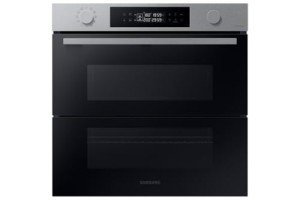Understanding Integrated Oven Sizes: A Comprehensive Guide
Integrated ovens have actually ended up being synonymous with modern kitchens, providing streamlined visual appeals and effective cooking services. As homeowners objective for a seamless look in their cooking spaces, comprehending integrated oven sizes becomes essential for optimizing kitchen layouts and guaranteeing efficient cooking. This post explores the various integrated oven sizes available in the market, their measurements, and how to choose the best one for your home.
What is an Integrated Oven?
An integrated oven is created to be built into kitchen cabinetry, providing a streamlined appearance that blends effortlessly with the rest of the kitchen. Unlike freestanding models, integrated ovens can be concealed behind cabinets doors or located at eye level, making them a popular choice for modern kitchen areas.
Key Features of Integrated Ovens
- Space-saving design: Optimizes kitchen location without jeopardizing style.
- Personalized finishes: Available in various colors and products to match kitchen decor.
- Advanced innovation: Often geared up with modern-day features, including smart innovation, differing cooking modes, and energy-efficient operations.
Common Integrated Oven Sizes
When considering an integrated oven, the most critical factor to examine is its size. Integrated ovens can be found in various dimensions, normally developed to fit basic kitchen cabinetry. The following table lays out the most common integrated oven sizes:
| Oven Type | Height (mm) | Width (mm) | Depth (mm) | Cooking Capacity (litres) |
|---|---|---|---|---|
| Single Built-In | 590 | 595 | 550 | 60-70 |
| Double Built-In | 590 | 595 | 550 | 60 (each oven, overall 120) |
| Compact Built-In | 450 | 595 | 550 | 30-40 |
| Mix Microwave | 455 | 595 | 550 | 30-40 |
| Wall Oven | 720 | 600 | 550 | 70-90 |
Factors to consider When Choosing an Integrated Oven Size
When it comes to selecting the appropriate size for an integrated oven, there are a number of factors to consider:
- Kitchen Layout: Evaluate your kitchen space and choose where the oven will be integrated into kitchen cabinetry.
- Cooking Needs: Consider how often you prepare and your culinary preferences (e.g., baking, roasting).
- Available Space: Measure offered kitchen cabinetry measurements to ensure the oven fits snugly.
- Capability Requirements: Assess the size of meals you normally prepare, particularly for families or when entertaining visitors.
- Future-proofing: Think about integrating patterns such as smart innovation or versatility in use.
Kinds Of Integrated Ovens
Integrated ovens are offered in numerous types, each offering special benefits:
- Conventional Ovens: Standard cooking functions, ideal for a lot of cooking methods like baking and roasting.
- Steam Ovens: Utilize steam for cooking, perfect for healthier dishes, retaining moisture and nutrients.
- Convection Ovens: Circulate hot air for even cooking, excellent for baking pastries and several meals simultaneously.
- Microwave Ovens: Offer fast reheating or defrosting choices and can be integrated with conventional ovens for versatility.
Advantages of Integrated Ovens
Integrated ovens supply many advantages that can enhance the cooking experience:
- Aesthetics: Offers a tidy style that fits flawlessly into any kitchen decoration.
- Area performance: Maximizes area by using built-in cabinets.
- Ergonomics: Mounting ovens at eye level improves benefit and safety when eliminating hot meals.
- Increased functionality: Many integrated options include functions such as self-cleaning and clever connectivity.
Often Asked Questions (FAQs)
1. What is the standard size for an integrated oven?
The most typical size for a single built-in oven is roughly 590mm in height, 595mm in width, and 550mm in depth.
2. Can I set up an integrated oven in an existing kitchen?
Yes, as long as the existing kitchen cabinetry can accommodate the size and specifications of the selected oven, it can be integrated perfectly.
3. Do integrated ovens have a bigger capability than freestanding ones?
Generally, integrated ovens have a similar capability to freestanding models; nevertheless, particular styles may vary. Always inspect the requirements for optimal area and capability.
4. Are integrated ovens more expensive than freestanding ovens?
Incorporating an oven can be more pricey due to installation and modification. However, Ovens And Hobs differ based upon brand and technology, so it's vital to compare options.
5. Is maintenance various for integrated ovens?
Maintenance for integrated ovens resembles that of freestanding models but may require more care with built-in cabinetry elements. Regular cleaning and comprehending the oven's functions are necessary for longevity.
Picking the ideal integrated oven size is important for enhancing kitchen area and enhancing culinary experiences. By comprehending the various setups readily available and thinking about private cooking requirements, property owners can perfectly incorporate a modern-day oven into their kitchen areas. With a series of designs to suit diverse aesthetic appeals and performances, integrated ovens remain a popular option for modern cooking spaces. Whether you're refurbishing or constructing a new kitchen, choosing an integrated oven customized to your needs will guarantee years of satisfaction and cooking creativity.

